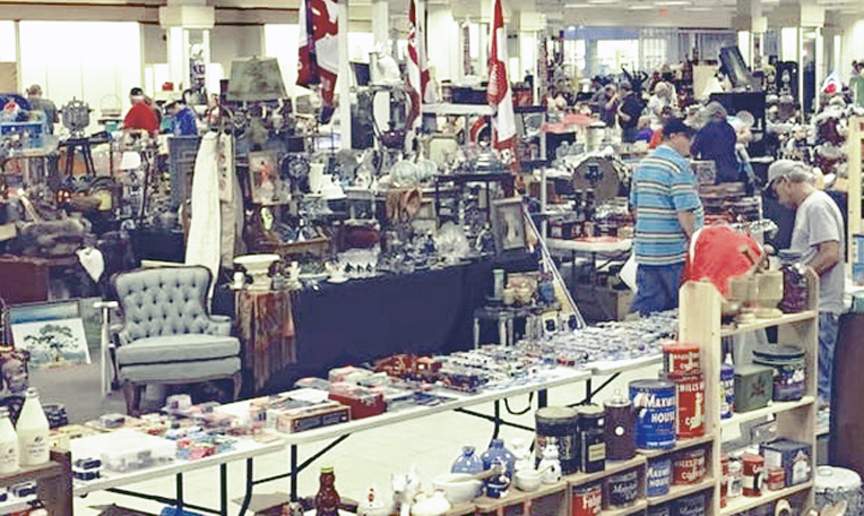
A Rare Find Discovered at the Olde Towne Portsmouth Antiques to Flea Market
Date: August 14, 2018 By: director@oldetowneportsmouth.com Category: Antiques
By Joe Elder
As an ardent seeker of all things antique, I love to frequent places that I might potentially find that special item to add to my collection. On my list of places that I’m accustomed to patronize is the Olde Towne Portsmouth Antiques to Flea Market. Held the first Saturday of each month (rain or shine) in the County Street Parking Garage, this market offers a diverse and eclectic selection of items- you’ll never know what you may find and of course the selection changes every month.
I was browsing one Saturday at the OTPAFM and there sat in ones booth, a painted windsor chair. I walked over to look at it, picked it up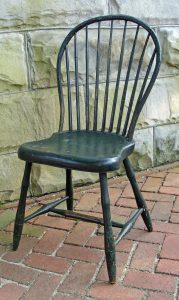 and observed the chairs construction and condition. After scrutinizing over the chair for a few moments, I appraised that it was indeed an authentic 18th century windsor side chair and by the style and construction was from Pennsylvania and again, Philadelphia. The most exciting discovery was that on the bottom of the chair, the makers name was branded. Turns out to be made by one of the most famous windsor chair makers of the late 18th century!
and observed the chairs construction and condition. After scrutinizing over the chair for a few moments, I appraised that it was indeed an authentic 18th century windsor side chair and by the style and construction was from Pennsylvania and again, Philadelphia. The most exciting discovery was that on the bottom of the chair, the makers name was branded. Turns out to be made by one of the most famous windsor chair makers of the late 18th century!
The maker of this bow-back windsor chair was JOHN LETCHWORTH of Philadelphia, Pennsylvania. He was born in 1759 and died in 1843. John, who was known to have “achieved greatness among his fellow craftsmen” “The highly productive Philadelphia turner produced a wide variety of Windsor chairs and settees from his small two story 800 sq. foot shop located on Third Street between Walnut and Chestnut Streets (circa 1785) just a few short blocks from Independence Hall.
Also located at: 78 South Fourth Street (around 1791 and 1794-1800); 79 South Fourth Street (starting in 1793).
Like most Philadelphia chair makers, John was a Quaker artisan. He apprenticed before the Revolution to an unknown Philadelphia Windsor chairmaker. He returned to his windsor chair making occupation after the end of the Revolutionary War and continued in the chair making business until 1807. He then moved to Chester County and pursued a career as an itinerant Quaker preacher.
HISTORY:
American Windsors first appeared in Philadelphia, and the city became the center of the Windsor-chair making industry in North America from the late 1740’s until the early 1800’s. Philadelphia’s coastal location midway between New England and the South and within a few weeks sail of the Caribbean islands encouraged active trade. Local entrepreneurs realized the potential of the Windsor as early as 1752. Their success and rising demand for the new chairs encouraged more craftsmen to make Windsors.
Chair maker John Letchworth is credited with introducing a highly ornamental version of the bow-back Windsor between 1796 and 1802.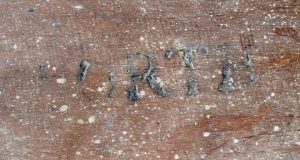 As demonstrated on this chair, it is constructed with a single board saddle seat, bamboo-turned legs, inform stretchers, tapered bamboo-turned spindle. Bow backs were made from 1780 to as late as 1820. Letchworth’s chairs were branded in capital letters on the bottom of the chair seat “I. LETCHWORTH”
As demonstrated on this chair, it is constructed with a single board saddle seat, bamboo-turned legs, inform stretchers, tapered bamboo-turned spindle. Bow backs were made from 1780 to as late as 1820. Letchworth’s chairs were branded in capital letters on the bottom of the chair seat “I. LETCHWORTH”
COLLECTIONS AND OWNERS OF HIS CHAIRS
Bishop William White, Philadelphia, PA.
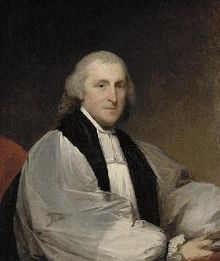 There are 10 of Litchworth’s windor chairs and settees in the Independence National Historical Park in Philadelphia. Windsor chairs were
There are 10 of Litchworth’s windor chairs and settees in the Independence National Historical Park in Philadelphia. Windsor chairs were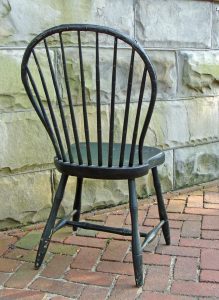 ordered and used in the (then) new the Assembly Room of the State House, now known as Independence Hall. John Letchworth made chairs for the old City Hall at Fifth and Chestnut Streets. ” He also made at least one chair for Bishop William White, which White installed in the study of his Walnut Street home. Bishop William White was the Rector of Christ & St. Peter’s Churches in Philadelphia, Chaplain to the Continental Congress, First Protestant Episcopal bishop of Pennsylvania Presiding bishop of the Protestant Episcopal Church.
ordered and used in the (then) new the Assembly Room of the State House, now known as Independence Hall. John Letchworth made chairs for the old City Hall at Fifth and Chestnut Streets. ” He also made at least one chair for Bishop William White, which White installed in the study of his Walnut Street home. Bishop William White was the Rector of Christ & St. Peter’s Churches in Philadelphia, Chaplain to the Continental Congress, First Protestant Episcopal bishop of Pennsylvania Presiding bishop of the Protestant Episcopal Church.
Letchworth’s chairs and settees can be found on display in numerous National and historic home museums.
Printed in the Papers of Thomas Jefferson, Volume 31, July 1800; John Letchworth, who made Thomas Jefferson six windsor or “stick chairs”. (TJ wrote to both John Barnes and to George Jefferson), both on the 19th of July, 1800.
A letter from Hohn Barnes to TJ- George Town 26th. July 1800- Mr Letchworth—I presume must have reed two Orders—for ½ doz. each—but Were the Other ½ dozn. are—or were shipped & to whom—I cannot now Recollect. but I shall write—Mrs Ratcliffe to inquire particularly of Mr Letchworth abt them—I found your packages for Washington are all safely—stored here
George Jefferson, Jr. (1766-1812) Commission merchant in Richmond (seventy miles from Monticello) from at least 1797 to 1812, acted as Thomas Jefferson’s commission agent.
John Letchworth, one of Philadelphia’s leading makers of Windsor furniture, made these double-rail side chairs, which were shipped to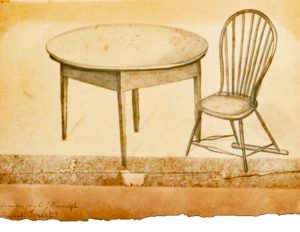 Monticello. TJ’s sketch of one, virtually identical with one of Letchworth’s chairs illustrated in Hornor, Philadelphia Furniture, plate No. 470, is on his letter to George Jefferson, 19 July 1800).
Monticello. TJ’s sketch of one, virtually identical with one of Letchworth’s chairs illustrated in Hornor, Philadelphia Furniture, plate No. 470, is on his letter to George Jefferson, 19 July 1800).
Jefferson’s personal property including his furniture was auctioned off at a public auction in 1827.
(See B. Garvan, Philadelphia, p. 156). 1786, Sep 11in full for Twelve windsor Chairs
John Letchworth (b. 1759, retired c. 1805), (Wm. MacPherson Hornor, Jr.,
Blue Book Philadelphia Furniture, 1935, p. 301; see also Plates 469-480, esp. Pl. 477.
Photo images
Front view of the bow-back windsor by John Letchworth.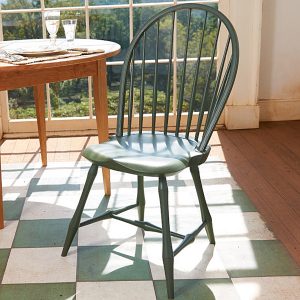
Makers brand on the bottom of the windsor chair.
Bishop William White, Philadelphia, PA.
Back view of the bow-back windsor by John Letchworth.
Sketch by Jefferson’s granddaughter Cornelia, depicting a table with a revolving top and one of Jefferson’s “stick chairs.
A reproduction of this bow-back side chair for sale at Jefferson’s home, Monticello.